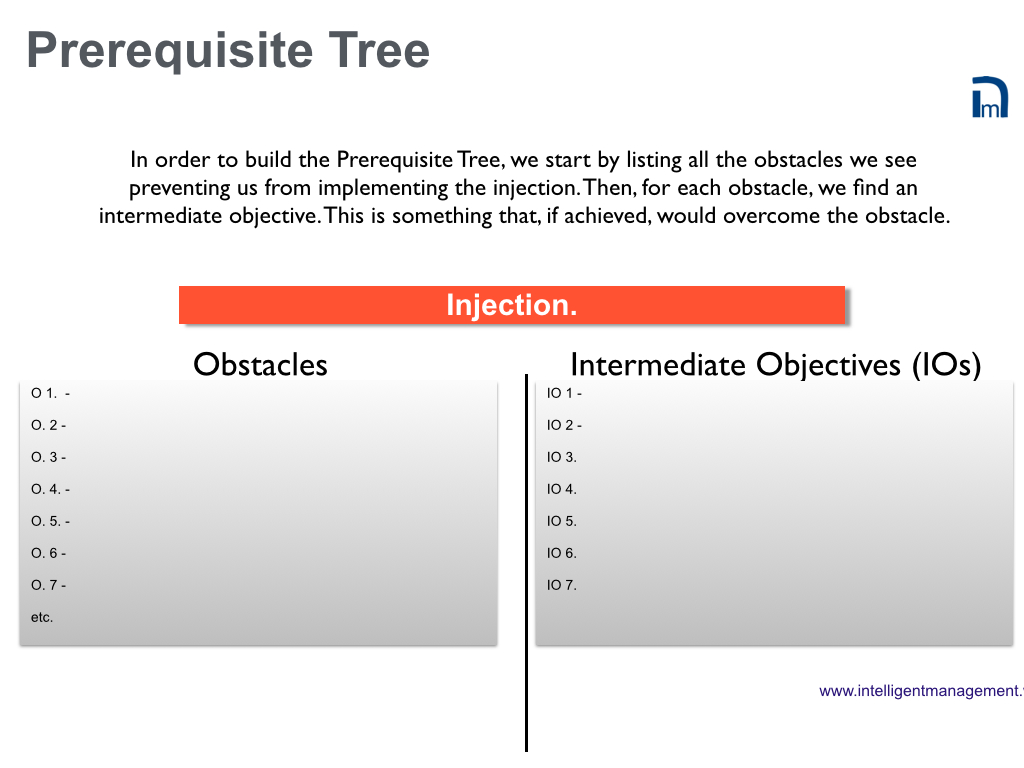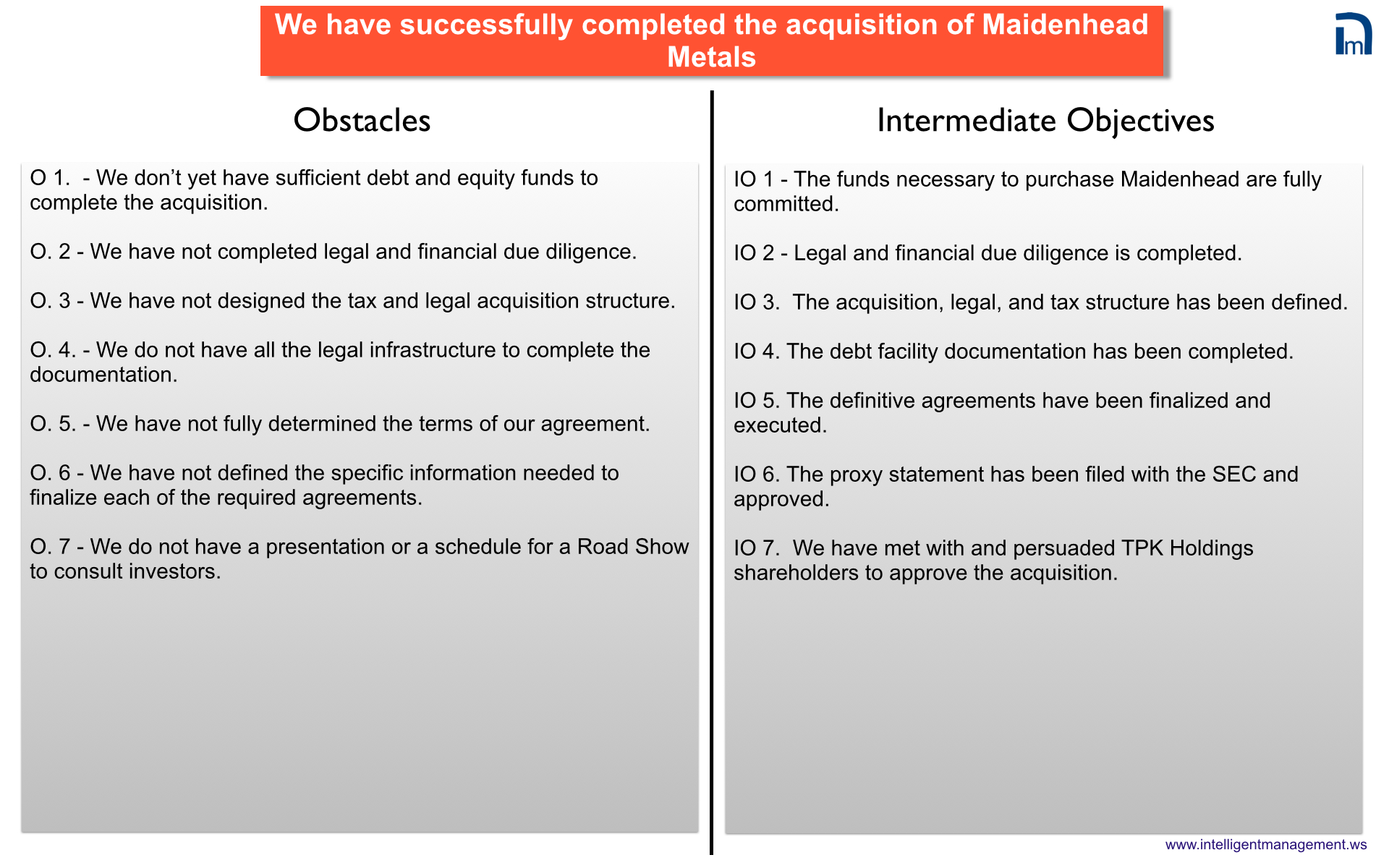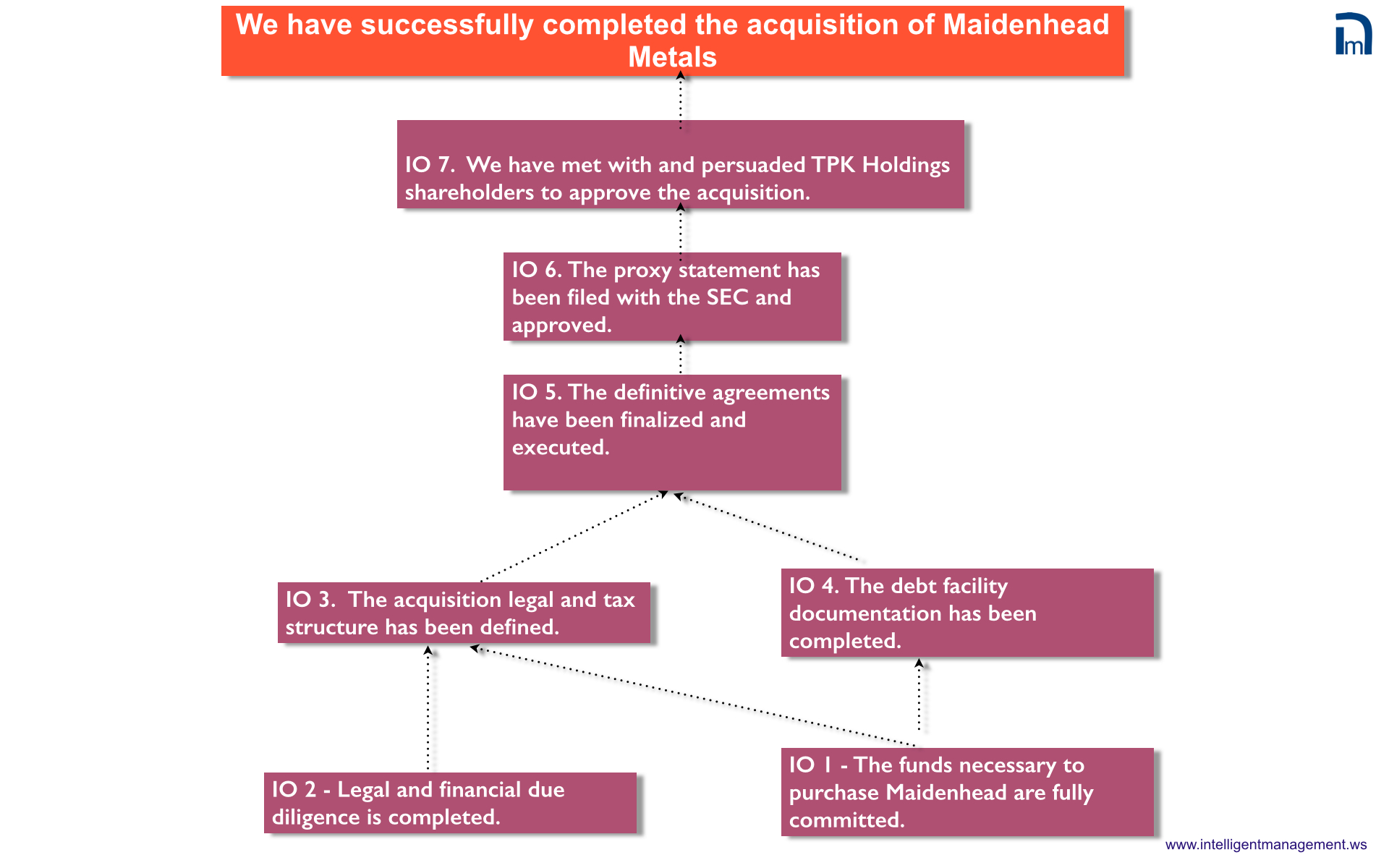In Chapter 10 of ‘The Human Constraint’, the TPK Holdings team get to work on the Prerequisite Tree (PRT) for the acquisition. The PRT is a Thinking Process Tool that is used to plan out the various steps that need to be taken to complete a project and achieve a specific goal. We use it in the third phase of What to Change, What to Change To, and How to Make the Change Happen. The PRT helps us substantial in the ‘how to’ or implementation phase.
The beauty of the PRT is that we start with all the things we feel are blocking us on our path to our chosen goal and we transform them linguistically into Intermediate Objectives. In other words, what would it look like if we overcame the obstacle? If the obstacle on our path is, for example, “I don’t know who to contact to get relevant information.“ then the Intermediate Objective could be “I have researched and gathered contacts for sources of relevant information.”
We transform our list of Obstacles into a list of Intermediate Objectives (IOs), but this is not a ‘to-do’ list. We then have to sequences the IOs in order of prerequisites. What has to be done first in order for the other IOs to be achieved? We build up from the bottom until we reach the goal.
In Chapter 10, the TPK Holdings team come up with 27 obstacles. That makes a very unwieldy amount of obstacles. Many of them would have commonalities, so it would make sense to group those obstacles into categories to achieve some macro Intermediate Objectives. For Each IO, they would have to plan out a detailed set of steps. Each step can become a task to be scheduled in a project. (This breaking down into smaller steps can be done with another tool called the Transition Tree.)
So the Prerequisite Tree that the TPK Holdings build to complete the acquisition of Maidenhead Metals made up of macro Intermediate Objectives would look something like this:
They would then have to decide on the prerequisites, i.e. what has to be done first, second third etc. or in parallel in order to get to the goal. That could look like this:
A PRT is a map; it is based on a logic of necessity and does not foresee any check based on conditions of sufficiency. It is, essentially, a roadmap, a guide that provides a suitable route to the goal. Its main value lies in the collaborative effort required to build it and it is an ideal tool for teamwork. It is the simplest of the TP to learn but it can be misleading; it is not just a list, it is a list with priorities dictated by logical prerequisites and these prerequisites are, in turn, altered by the amount of resources at hand. You will be surprised to see how many different points of view there are in a group trying to address “what is logically a prerequisite to what”.
Although it is highly rigorous tool, there is something a little magical about a Prerequisite Tree. It is only the starting point for a lot more detailed work through Transition Trees and then planning of steps through a scheduled project, but just by focussing your thinking through these tools it can create a shift in reality, speeding up the process of moving towards the goal.
This article is from the Knowledge Base that accompanies the business novel ‘The Human Constraint’. See www.thehumanconstraint.ca








